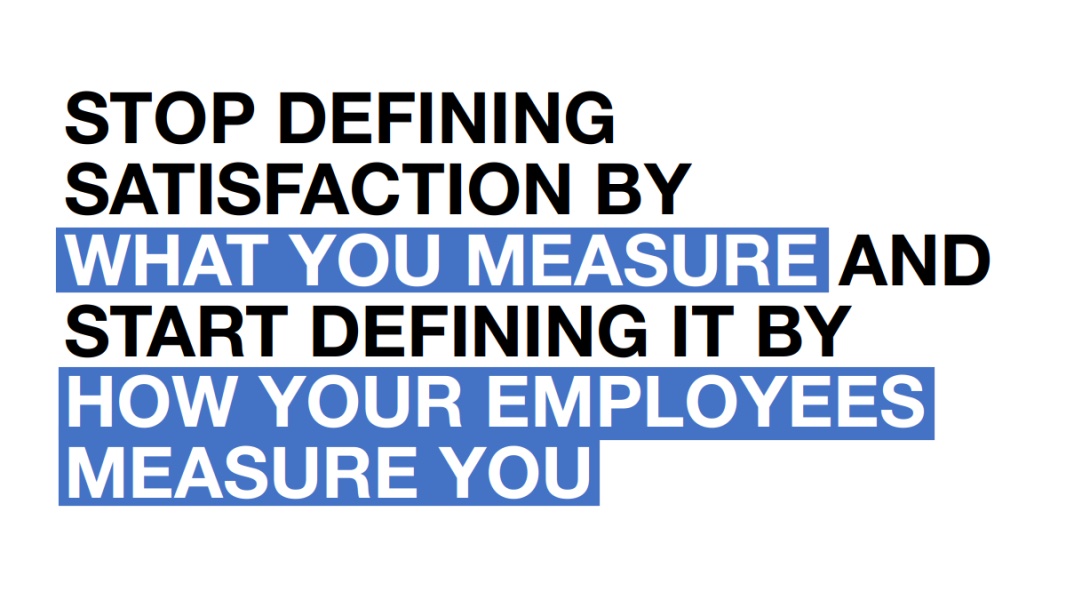By Hank Marquis
IT Satisfaction Has a Perception Problem

Satisfaction has a perception problem. When I talk to people about satisfaction, we often spend the first part of the conversation reaching a common understanding of satisfaction.
Some IT folks think satisfaction means monitoring workstation technology, others believe it's periodically asking how satisfied an employee is, and some think it's both. Yet others think satisfaction only applies to the IT Service or Help Desk.
Satisfaction has a problem precisely because it is subjective. What one person finds satisfying may not be to another person. Additionally, many factors, such as expectations, attitudes, and culture, can influence an employee's perception of satisfaction.
We can only know authentic digital employee experience satisfaction when we measure ourselves as our employees measure us.
For example, one person may find a job satisfying while another may not, depending on their expectations and attitudes. External factors, such as the economy or the availability of other jobs, can also influence satisfaction.
As a result, satisfaction can be difficult to measure, making it challenging to address satisfaction issues.
For those of us who have always worked from inside IT outward towards our employees, we often hold false perceptions of what's acceptable. We hold fast to the reactive observation of operational metrics. That's the old way of thinking, the non-digital way of thinking.
Switching perspectives to that of our consumer—today's digital employee working hybrid with a portable digital workplace solution—is critical to our continued employment and keeping our business open.
While we understand that an outside-in view is essential, we often fail to change our perception approach because we believe we can get enough information from monitoring our service delivery technologies.
But that approach doesn't work anymore—if it ever did. So we choose not to progress but rather to double down on what we've always done, and there is no better definition of failure than that.
The winners evolving in every marketplace, industry, and geography know that measuring IT service traditionally (quality of service metrics) is necessary but insufficient.
They know that to measure from the outside in requires quality of experience measured from the employees' perspective.
It's both possible and plausible to maintain the existing operational metrics system and its reporting requirement while starting to build out humanistic data collection for specific digital employee groups.
This has multiple benefits:
- We learn new skills. We can influence business results if we choose digital workgroups and employee pods based on a requirement for an improved experience. This sets the stage to scale too.
- We integrate for impact. We can begin evaluating and sharing integrated (operational + humanistic) metrics with decision-makers to allow those in the metrics hierarchy to learn about the new and additive approach.
- We empower positive change. Our Human Resources partners should see increased engagement from those teams targeted, helping set the stage for change.
What matters to an employee is being able to do their job when they need to do it. Anything that gets in the way lowers their perceived satisfaction and quality of experience. Your operational metrics can be 100% correct—"the lights are all green"—and still, your customers are livid and dissatisfied with their experience.
To summarize: Focus on experience satisfaction, not IT satisfaction.
Here's my advice:
- Create a clear, unified definition of satisfaction that everyone can understand and use.
- Identify the factors influencing satisfaction, such as expectations, attitudes, and technology.
- Put in place measures to monitor and address these factors. This includes technology and the equally important emotions that drive the perception of satisfaction in digital employees.
Please comment or reach out and let me know what you think, I'd love to talk with you!
Best,
Hank
— END —
Got questions? Let's talk! Contact me via email, or connect and chat with me on LinkedIn